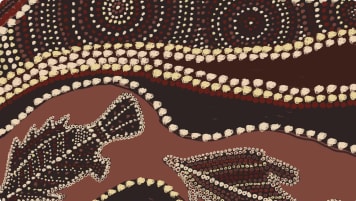France and an Australian Colony
Aboriginal history runs long and deep in Australia, the British and the French almost split Australia as colonials. this articles is for senior couples and solo travellers seeking to learn more.
13 Jan 22 · 17 mins read

How France Missed out on an Australian Colony
By Marco Stojanovik
Colonial Australia could quite easily have been split between Great Britain and France, with several French explorers touching on several parts of the continent’s coast around the same time as the British came to colonise. In June 1768, Louis-Antione, Comte de Bougainville was unable to land his ship, blocked by the outer shoals of the Great Barrier Reef. Two years later, Captain James Cook’s Endeavour passed through the same area as he claimed all land east of 135°E as New South Wales for the British. Then, just two years later, an explorer called Louis Aleno de St Aloüarn landed at Shark Bay and claimed Western Australia for the French.
On 18 January 1788, the British followed up on their claims, landing the first fleet at Botany Bay. Following behind, arriving just six days later, were two vessels commanded by the French naval officer Jean François de Galaup, comte de Lapérouse. However, whereas Britain went on to settle New South Wales, the French failed to do so in the western half of the continent, despite their own claims to the region.
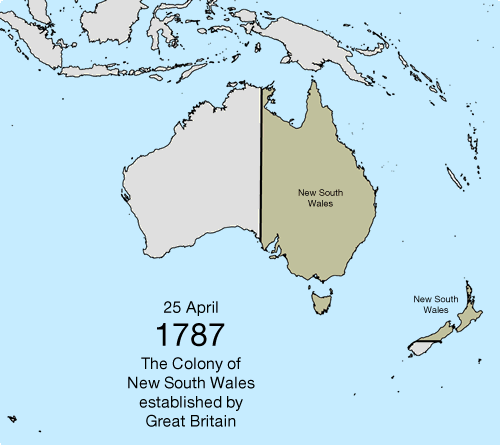
Political instability and the slide into revolution in 1789, ending in the late 1790s, was a major factor, putting an abrupt halt to further French maritime expansion. This was followed by Napoleon‘s aggressive campaigning on the European continent in the early 19th century and the bankrupt years of the Bourbon Restoration period. The nation’s attention and resources had been diverted from the southern oceans during a crucial period. As such, France’s scientific and cartographic discoveries were not utilised as they could quite easily have been to establish French colonies south of the equator in the late 1700s or early 1800s. And the explorer Nicolas Thomas Baudin failed to press French claims for territory in Australia when the opportunity arose during his 1801-04 voyage to the region,
Louis XVIII, the first French king of the Restoration period, sought to make up for the lost opportunities. One of his early initiatives was encourage to French merchants and scientists to resume both their trade and research on the high seas, leading to several expeditions in the 1820s. By this stage, there was still the chance to establish a settlement on the Australian continent.
The respective expeditions of Louis-Isidore Duperrey and Hyacinthe-Yves-Philippe-Potentien de Bougainville could have provided vital information about a potential site for settlement in Western Australia. However, both failed to land on the western side of the continent. By the time Jules Sébastien César Dumont d’Urville landed at King George Sound in 1826, strongly impressed with its suitability as a site for a French colony, it was too late. The British, privy to French intentions, beat them to it, travelling to and establishing a presence at both Western Port and King George Sound just weeks after D’Urville had been there. In doing so, they effectively took possession of the western side of the continent.
The article is part of a series on recent Australian history, intended as background reading for Odyssey Traveller’s tours in Australia. It explores a series of expeditions that took place in the early 1800s to show just how close France came to establishing its own colony in Australia. Much of the information is sourced from chapter 9 of Noelene Bloomfield’s Almost a French Australia: French-British Rivalry in the Southern Ocean as well as sources linked to throughout.
Nicolas Baudin’s Expedition (1800-1803)
Nicolas Thomas Baudin was born on 19 February 1754 at St-Pierre-de-Ré, France. Joining the navy as a cadet in 1774, he rose quickly through the ranks to be promoted sub-lieutenant in 1786. An adept gatherer of plants and specimens, he took charge of a scientific expedition to the Indian Ocean in 1792 to collect them for Archduke Franz-Jospeh of Austria. Then on a similar scientific voyage to the West Indies in 1796, he collected material for museums in Paris.
Due to these achievements, Napoleon endorsed Baudin to conduct an expedition exploring the coasts of New Holland (now Australia) and the southern part of New Guinea in 1800. The purpose of the voyage was to map territory, conduct scientific investigations, and collect specimens of flora and fauna. For this, Baudin was granted two ships, Le Géographe and Le Naturaliste (captained by Jacques Félix Emmanuel Hamelin), as well as 23 eminent scientists, including astronomers, geographers, mineralogists, botanists, gardeners, zoologists, landscape and portrait artists, naval surgeons, and a pharmacist.
Having departed Le Havre, France, on 19 October 1800, the expedition finally after several delays reached Cape Leeuwin on the south-west corner of Australia on 27 May 1801. Over the next three months, the two vessels surveyed larges stretches of the north-west coast and gathered scientific data. Having separated from each other, they eventually reunited in September at Timor, where they replenished their supplies.
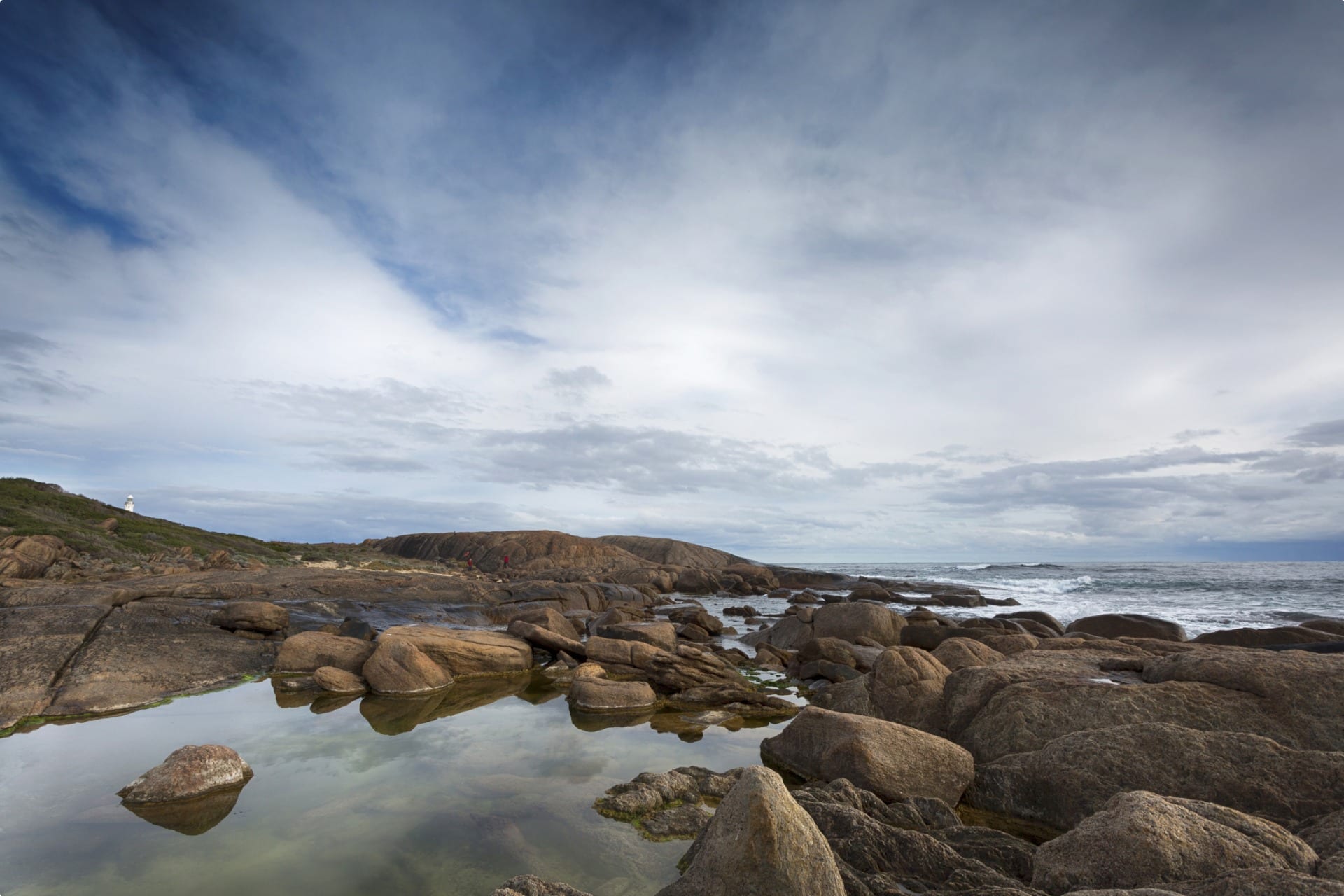
From Timor, the expedition set sail on 13 November for Van Diemen’s Land (now Tasmania) via the western and southern coasts of the continent. Arriving at Van Diemen’s Land on 13 January 1802, they went on to chart the entire east coast of the island, while making important ethnological studies of the Indigenous Tasmanians, with whom they had peaceful interactions.
The expedition then began to survey the south coast of Australia. However, running short on food and water, captain Hamelin and Le Naturaliste were forced to turn pack for Port Jackson (Sydney), exploring and naming places in the area of Western Port, Victoria, along the way.
Baudin in Le Géographe meanwhile continued westwards from Wilson’s Promontory, also giving French names to places. In April, at Encounter Bay in what is now South Australia, he made the now famous meeting with Mathew Flinders in the British ship Investigator. He then sailed on to the Nuyts Archipelago, before also heading back to Port Jackson for provisions, where he arrived in late 1802.
While recuperating in Port Jackson, Baudin sent Hamelin and Le Naturaliste back to France carrying all the expedition’s collected specimens. He then bought from Governor Phillip Gidley King a smaller 30-ton vessel named Casuarina to be used to conduct close inshore survey work. Lieutenant Louis de Freycinet was given commands of the ship and on 18 November, with Le Géographe, they set sail to continue their explorations of the Australian coast.
Heading for Tasmania, the expedition conducted further charting of Bass Strait, before heading west along the southern coast of Australia and then back northwards along the continent’s west coast. Along the way, Freycinet completed excellent surveys for many charts, most notably of the coast northward from Cape Northumberland, around Kangaroo Island, Sharks Bay, and Dampier.
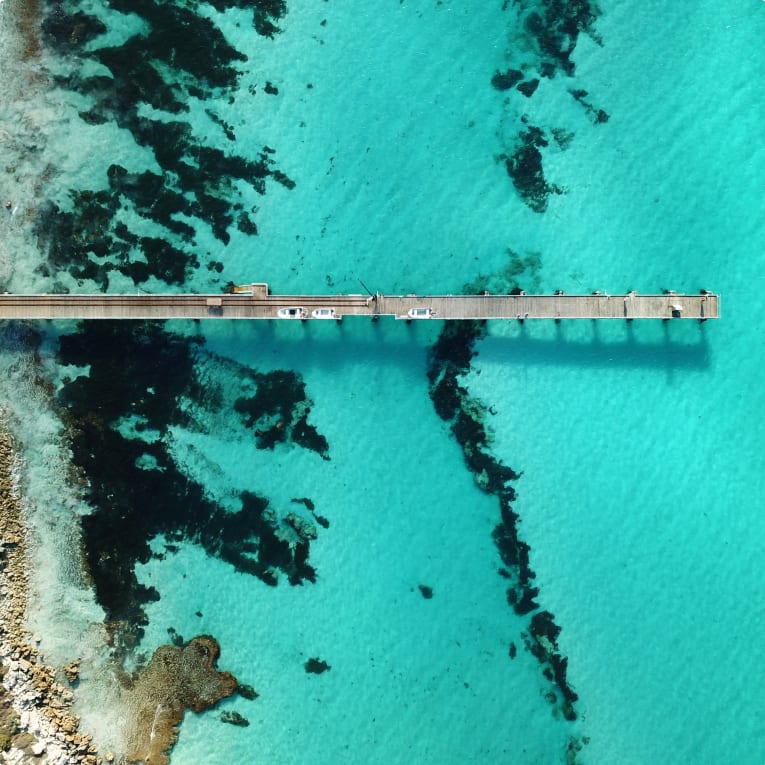
The expedition then proceeded to Timor, before conducting a further brief exploration along the north coast of Australia. But with contrary winds and ill health amongst the crew, Baudin decided on 7 July 1803 to return to France. Along the way, the ships stopped in Mauritius, with Baudin quite sick of tuberculosis. He died here on 16 September 1803.
Finally, the scientific expedition made it back to France on 24 March 1804. Having made important investigations into Australia’s geography, Aboriginal people, fauna, and flora, including the discovery of some 1500 botanical and 3900 zoological species, it was considered a great success. These collections, many of which became part of Empress Josephine’s garden at Malmaison, were fundamental in forming the European understanding of the biodiversity of the newly discovered continent.
Despite the expedition’s success though, Napoleon is said to have been furious at Baudin for failing to claim South Australia for France before Matthew Flinders did. But this had never been a main purpose of the expedition, with France’s attention keenly focused on the Napoleonic Wars in Europe at this time. Baudin also expressed doubts about taking possession of territories under Indigenous ownership. In a letter to Governor King in Sydney, he wrote:
“To my way of thinking, I have never been able to conceive that there was justice or even fairness on the part of Europeans in seizing, in the name of their governments, a land seen for the first time, when it is inhabited by men who have not always deserved the title of savages or cannibals.”
The fact of the matter was that it was just not a priority for Baudin, and the French in general, to claim parts of Australia as a French colony at this time. Only some 20-ood years later would priorities begin to shift.
The Duperrey Expedition (1822-1825)
French naval officer and explorer Louis-Isidore Duperrey was born in Paris in 1786. Having joined the navy at the age of 17 in 1803, he rose rapidly through the ranks, serving as a lieutenant under Louis de Freycinet during his 1817-20 expedition. In this circumnavigation of the world, Duperrey took charge of hydrographic activities and produced valuable observations on the earth’s shape and on terrestrial magnetism, along with numerous charts.
Upon his return, Duperrey was promoted and awarded the Cross of St Louis for his work. Taking advantage for the excitement stimulated by his captain’s return, he then proposed his own expedition to the Minister of Marine, the Marquis de Clermont-Tonnerre. The aims of the mission were both scientific – studies on natural history, meteorology, and magnetism – and geographic, focusing on confirming or correcting the position of islands and other landmarks essential to safe navigation. To this was added the aim of locating a site for a possible settlement in Western Australia.
The accomplish this mission, Duperrey was allocated the Coquille, a corvette of 380 tons. He also enlisted the assistance of a younger colleague, Jules Sébastien César Dumont d’Urville, who became his executive and botanist for the voyage. The Pacific was to be a continuing interest for d’Urville, later leading two expeditions to the region (the first of which is covered below in this article). Joining them on board were two naturalists, René-Primevère Lesson and Prosper Garnot, both also the ship’s surgeons.
The Coquille departed from Toulon on 10 August 1822 towards Cape Horn, Chile. Along the way, they stopped at Santa Catarina in Brazil (amongst political chaos as Brazil had just declared its impendence), speedily putting in repairs and reprovisioning before sailing onwards via the Falkland Islands and Chile.
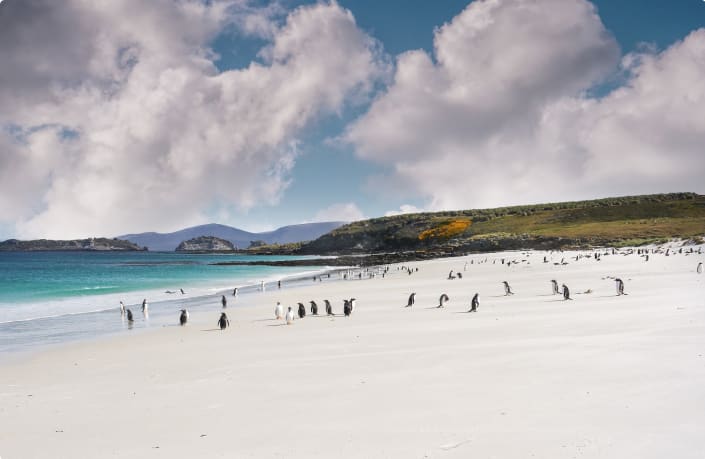
After rounding Cape Horn to reach the Pacific, the ship sailed along the coast of South America as far as Paita, Peru, and then headed westwards visiting numerous islands. This included the discovery of a new island, Reao, situated northwest of Pitcairn Island, before they sailed west through the Tuamotu Archipelago, to Tahiti and the nearby island of Bora Bora, and then the Society Islands, Tonga, and Fiji Islands.
Although they were bound for Australia, violent storms on the next leg of the voyage, in early July 1823, made a direct passage to Port Jackson difficult. Instead, they were forced to steer northwest, passing the Santa Cruz and Solomon Islands, before finding shelter at Port Praslin (now Kambotorosch Harbour) on the island of New Ireland, Papua New Guinea. Here, the local Indigenous people, despite their warlike appearance, happily traded food for cloth, ironware, and knives.
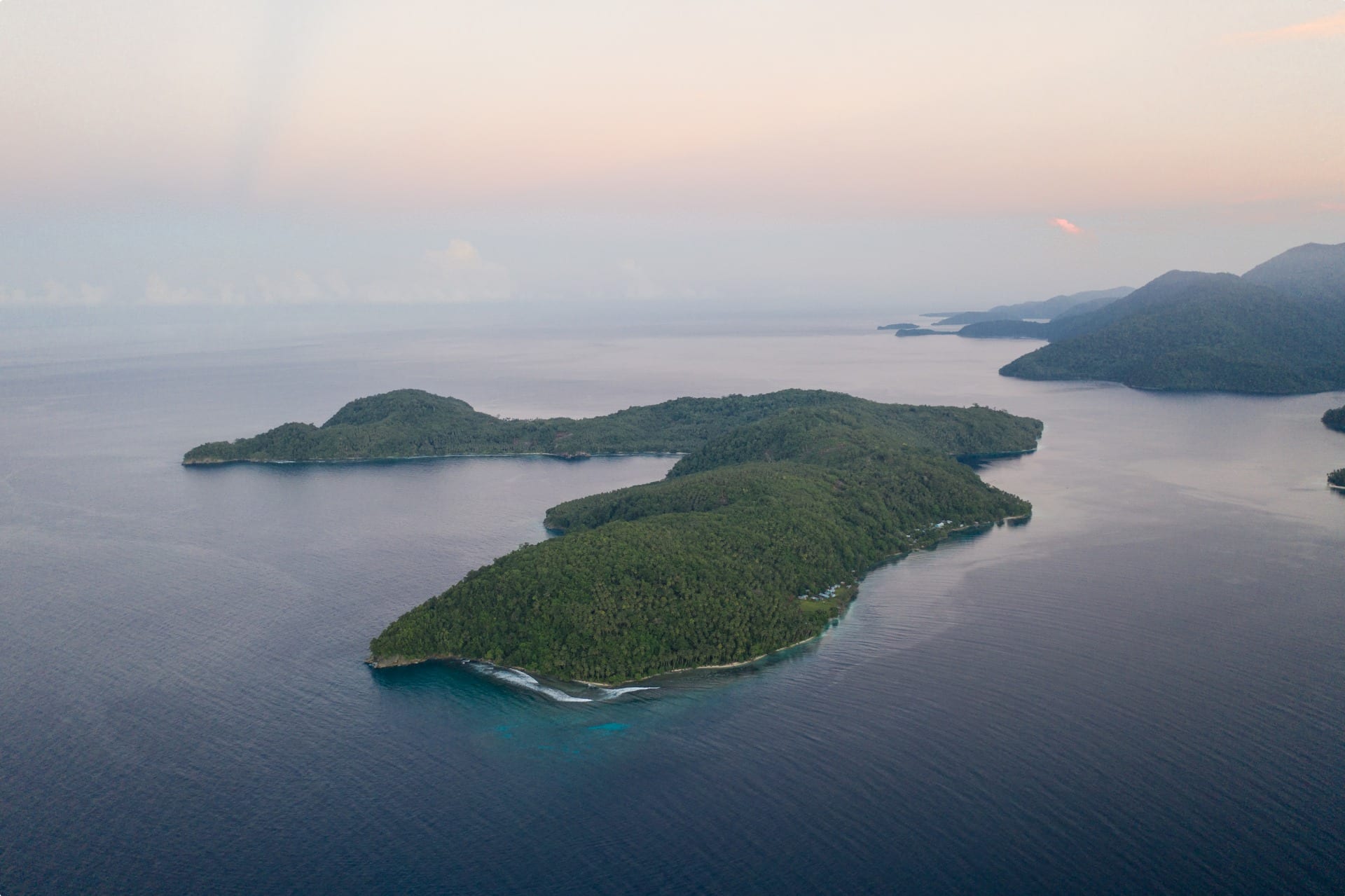
The expedition departed from here in August 1823, sailing across the top of New Guinea. However, they were so offshore that the scientists found it difficult to make accurate observations and d’Urville later expressed frustration at his commanders’ extreme caution.
After competing their survey work, they sailed to the Indonesian Island of Buru, where the Dutch Governor begrudgingly allowed them to purchase rice and cattle, before the sailed on to the Dutch port at Ambon. The resident advisor welcomed the French here warmly and they stayed for most of October. Few supplies were available here, however, and so Duperrey had to set sail towards the west coast in late October short of some supplies.
Therefore, Duperrey decided not to stop anywhere on the western or southern coasts of Australia, despite his orders to examine the western side of the continent for suitable convict settlement sites. Instead, he made a swift passage southward and rode the roaring Forties across to Tasmania, before turning southwards to anchor at Port Jackson in mid-Jan 1824. In a report to the French Ministry of the Navy and Colonies dated 15 Feb 1824, he pleaded contrary winds and food shortages as his reasons for not exploring either the Swan River, or King George Sound.
After a two-month layover, in April 1824 the Coquille continued to the Bay of Islands, New Zealand. Again, unable to procure sufficient supplies, they sailed westward for Fiji, anchoring at the island of Rotuma, where they picked up fresh vegetables from friendly locals. From here, they sailed northwards towards the Marshall Islands and then made their way around the top of New Guinea and past some of the islands visited or sighted the previous year, before sailing via the Dutch East Indies (Indonesia) to Mauritius and on to Reunion Island.
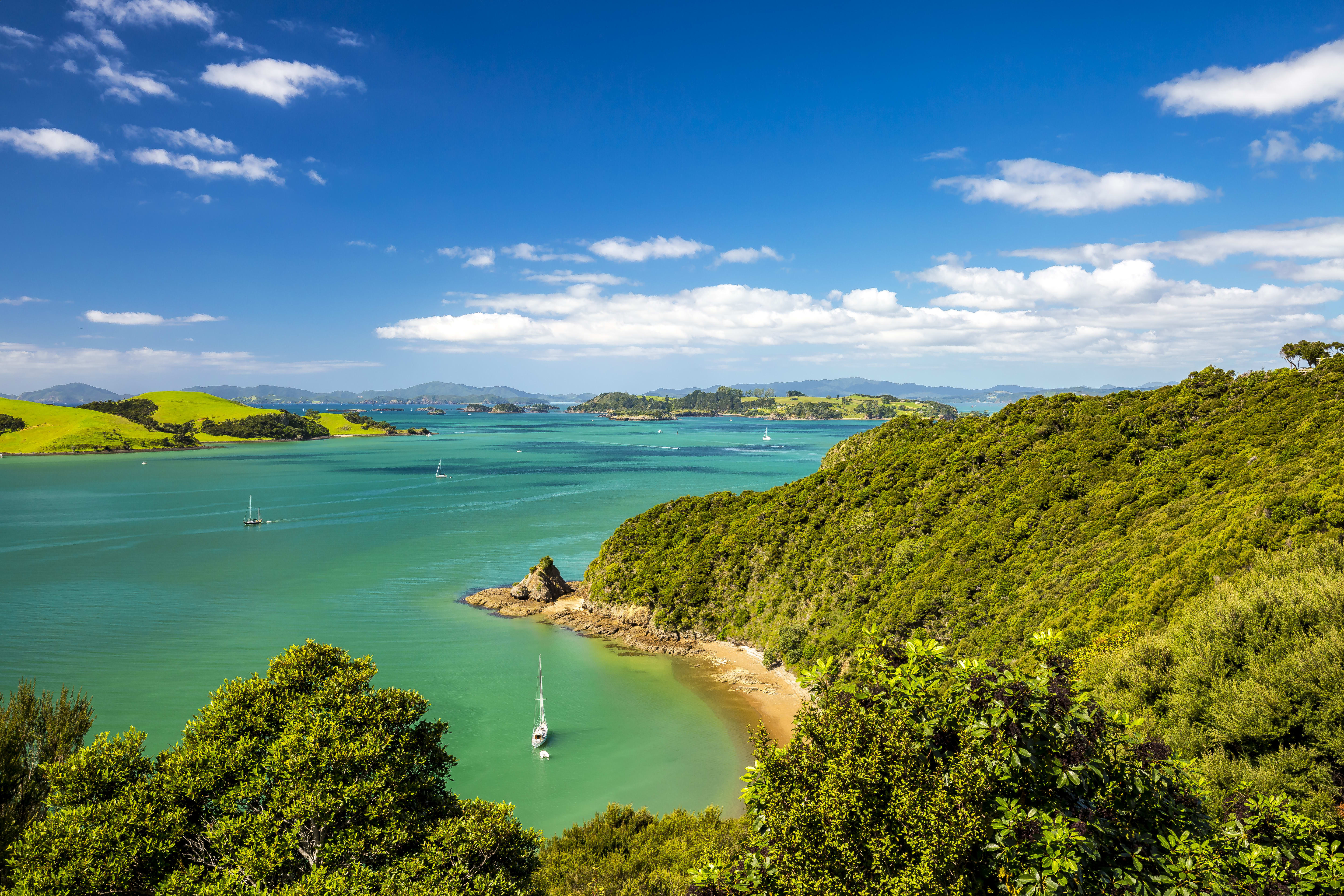
In January 1825, Duperrey anchored at the St Helena in the southern Atlantic Ocean, the lonely, tiny island to which Napoleon had been exiled from 1815 until his death in 1821. The trip home from here was uneventful, eventually reaching Marseille on 24 March 1825 after 31 months of absence.
Despite having neglected his mission to identify a suitable location for a convict colony, Duperrey’s mission in many ways was a success. He and his crew had discovered a number of undocumented islands, updated charts of little-known areas of the South Pacific, completed important hydrography measurements, and carried out significant studies on geomagnetic and meteorological phenomena. The expedition also amassed a staggering collection of botanical and zoological specimens for the Natural History Museum, as well as useful anthropological data about the Pacific Island people, their customs, and their weapons.
Hyacinthe de Bougainville’s Expedition (1824-26)
Born in 1781, the son of the famous explorer Louis-Antoine de Bougainville, Hyacinthe-Yves-Philippe-Potentien de Bougainville had very big shoes to fill. Anxious to follow in his father’s footsteps, he began his career in 1800 at only 18 years of age, joining the Baudin expedition of 1800 as an officer. Then, twenty-five years later, after service in the Napoleonic wars, his own proposal to lead a major expedition was finally approved.
On 2 March 1824, he set sail in the Thetis for Cochin-China, sent by the Minister of the Navy and the Colonies, the duc de Clermont-Tonnerre. His instructions were to attempt to establish diplomatic relations and obtain trade outlets lost during the European wars. Carrying official letters, he was also to sail by way of the Cope of Good Hope, calling in at Reunion Island, Pondicherry, Singapore, Manila, and Macao.
Bougainville’s reports to his minister about the commercial potential of the Asian region were not overly optimistic. He then carried out the required survey work along China’s southern coast and the island of Hainan, as well as charting the coast of Vietnam down to Hue; however, he was unsuccessful in concluding a trade agreement with the new Emperor there.
Bougainville was given free rein for the return journey, apart from an obligatory visit to Java. Unsurprisingly, he chose to retrace his father’s previous circumnavigation. It is a shame, however, that he decided not to call into either the Swan River or King George Sound.
Such was not a priority for the French at that moment. When Bougainville set sail from France, the French Naval Ministry had not yet received Duperrey’s 1824 report, in which he explained his reasons for not carrying out instructions to examine the western side of the continent. Moreover, as Britain had not yet challenged St Aloüarn’s 1772 claim to the western side of the Australian continent, the French still presumed they had prior claim to that region and saw no reason to hurry.
Bougainville instead sailed directly for the D’Entrecasteaux Channel in Tasmania. Severe winter storms, however, prevented safe anchorage there, and he reluctantly set sail for Sydney. He arrived in early June 1825, a little over a year later than his compatriot, Duperrey.
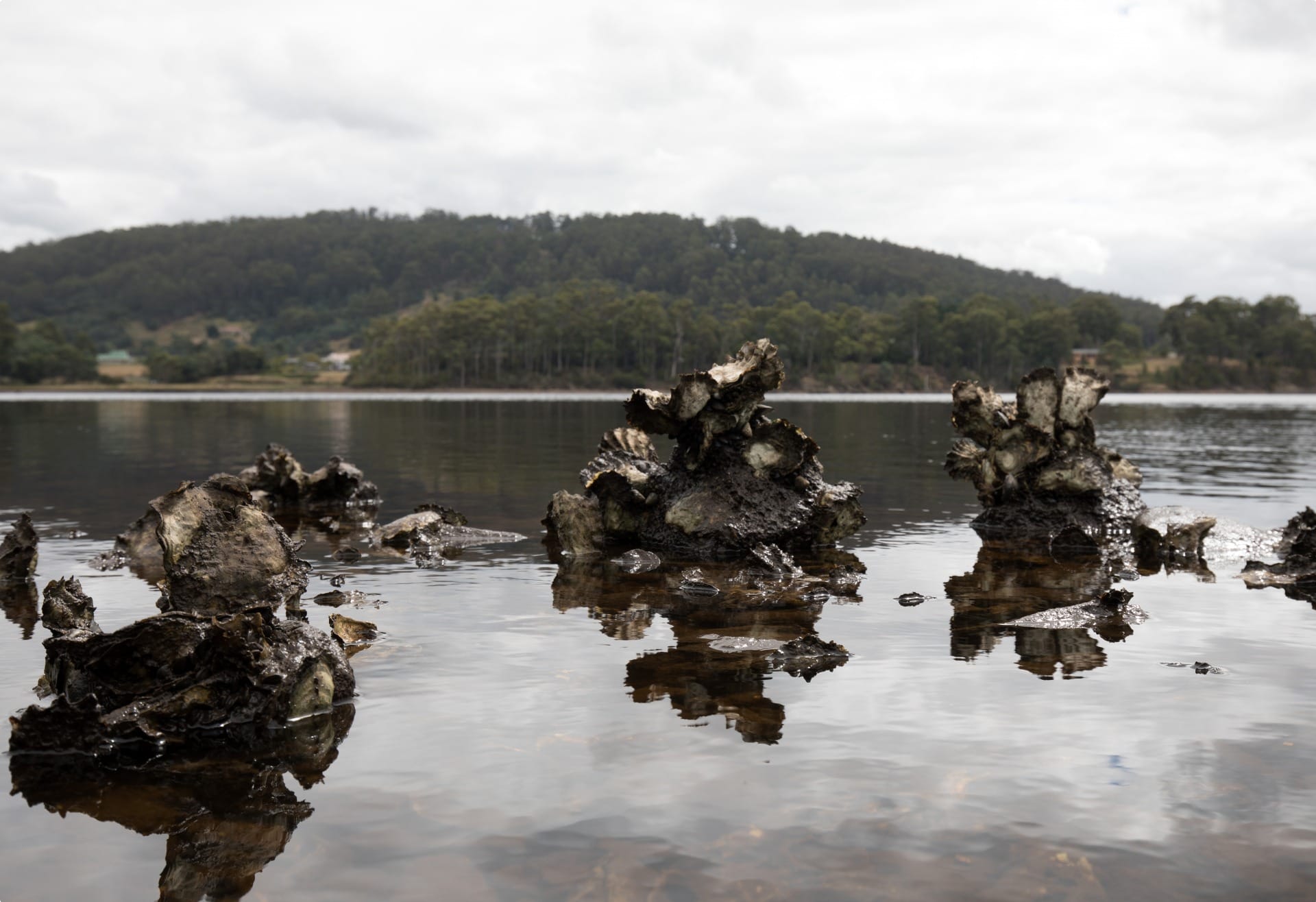
While in Sydney, Bougainville obtained a concession of land and the services of an architect to erect a lasting stone memorial to Jean-François de Galaup La Pérouse at the entrance to Botany Bay. It was here that Captain Phillip, establishing the settlement in 1788, had encountered the doomed explorer before he disappeared in the Pacific.
Bougainville returned to France via South America in June 1826. In all, his journey had been somewhat unremarkable. Winds and fogs had prevented him from visiting Tahiti and the Falkland Islands, both of which had strong associations with his father’s navigation, much to his disappointment.
Nevertheless, he had provided an up-to-date survey of the military strength of Manila, Singapore, the Australian colonies and Spanish America, the relative value of various harbours likely to be used to French naval units and the routes followed by vessels trading with India and China. His important collection of natural history specimens also received flattering praise.
Dumont D’Urville’s First Expedition (1826-29)
D’Urville was deeply disappointed and highly critical of the decision not to explore either the Swan River or King George Sound during Duperrey’s 1822-1825 expedition. As such, upon his return to France, he quickly applied for his own expedition in hope of carrying out these neglected missions.
D’Urville himself had acquired a reputation for being an extremely competent naval officer with undeniably extraordinary skill as a navigator. Born on 15 May 1790, he had grown to be an avid scholar, studying astronomy, navigation, botany, Latin, and the classics. By 1820, he had already made a name for himself, playing a pivotal role in acquiring the Venus de Milo statue for France during his first surveying expedition in the Mediterranean, for which he was later decorated with the Légion d’Honneur.
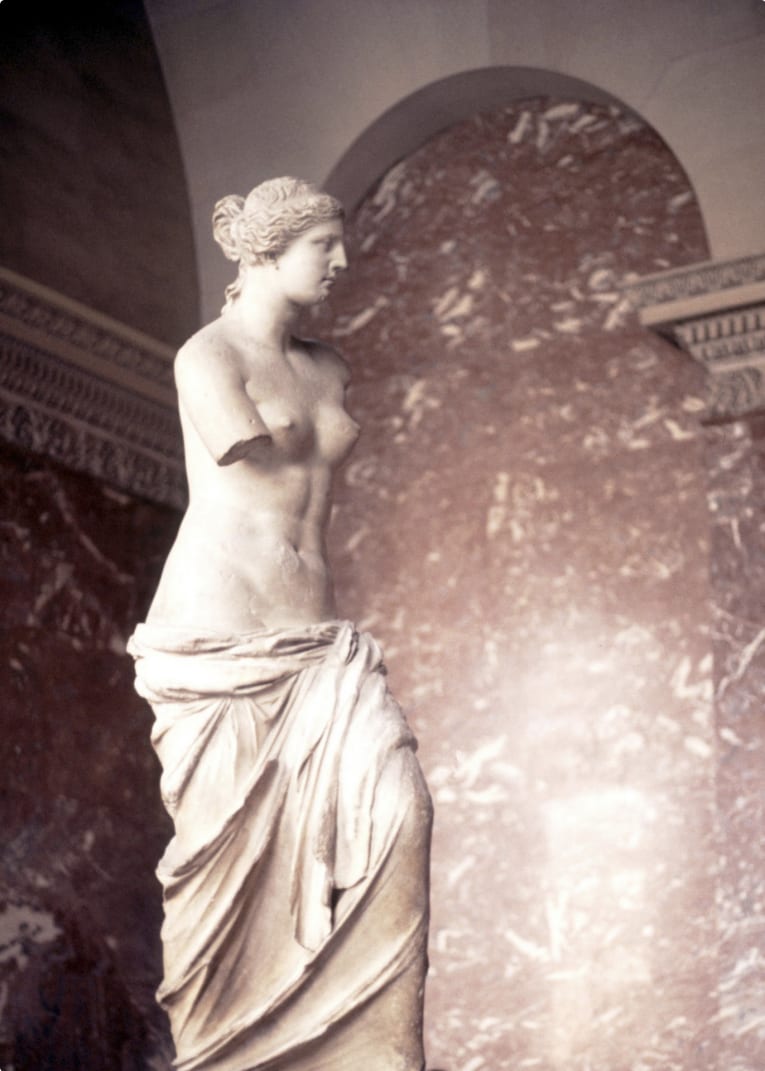
As such, his application to the French naval authorities to command an expedition exploring the coasts of New Guinea, New Britain and the Louisiades, and to investigate the viability of a French convict settlement in New Holland, was swiftly approved. Dumont d’Urville was to explore the southern Australian coastline, note good anchorages for French naval ships, collect scientific samples, and make astronomical observations. A vague rumour of the discovery of some items from La Pérouse’s 1788 wreckage reached France just before d’Urville set sail, so orders to investigate his matter were also hurriedly included.
D’Urville was promoted to the rank of frigate captain and given command of Dupperey’s former vessel, the Coquille, renamed the Astrolabe in honour of one of the ships of La Pérouse. The expedition set sail from Toulon on 22 April 1826.
Bad weather tested the Astrolabe and its crew on way to Gibraltar and across the Indian Ocean, until Cape Leeuwin, on the southwest Australian coast, was sighted on 5 October. Two days later the vessel found a sheltered mooring in King George Sound, where d’Urville anchored to carry out repairs and give the crew a rest.
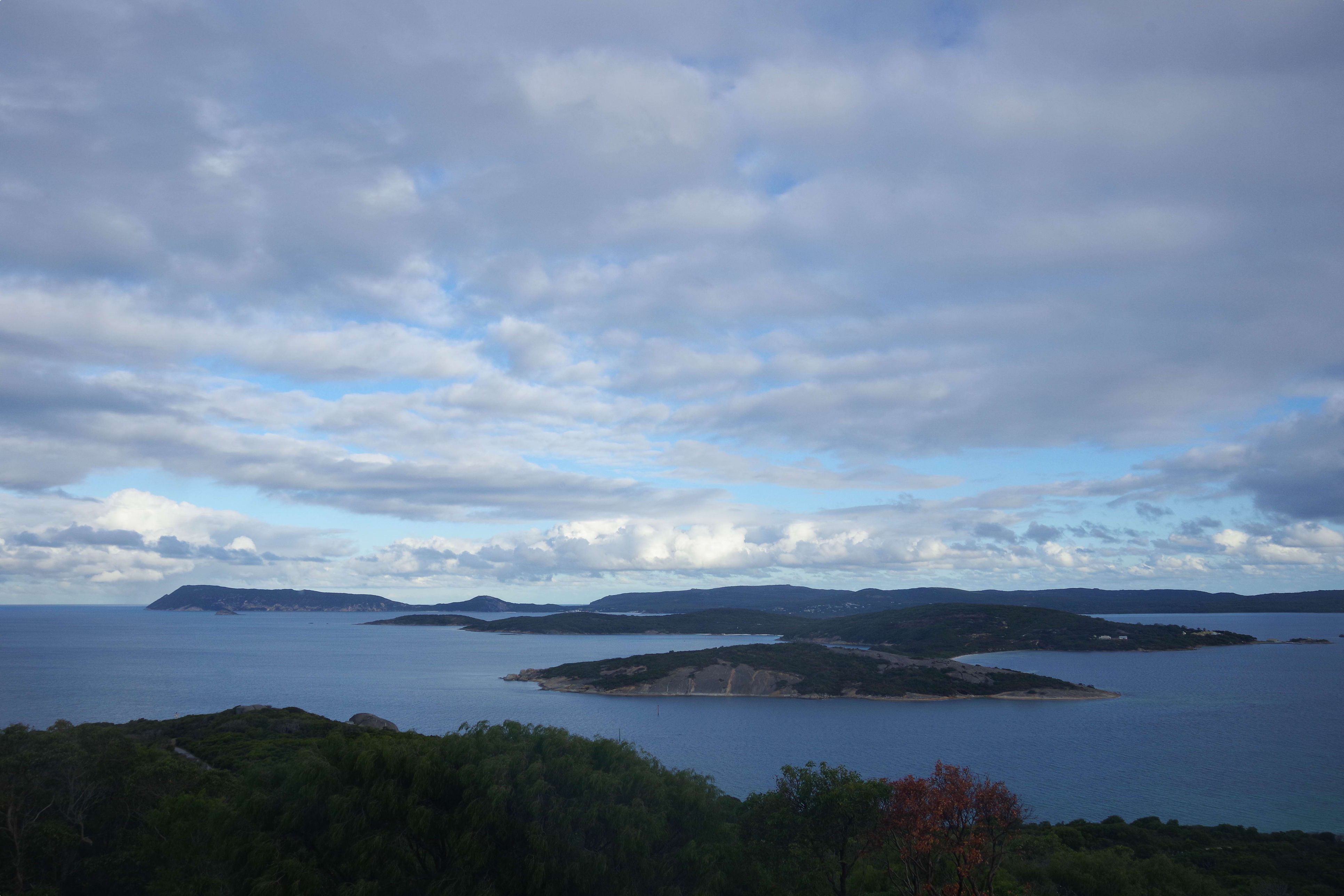
D’Urville stayed at the Sound for 18 days, during which he assessed its suitably as a port. He concluded with strong recommendations that the French establish a colony here, expressing surprise that the British had not yet already done so.
However, when the Astrolabe arrived in Port Jackson in December 1826, D’Urville discovered that the British had set out to do just that. The new governor, Ralph Darling, informed him bluntly that he had recently sent two brigs, the Dragon and the Amity, under the escort of HMS Fly, to establish a British presence at both Western Port and King George Sound. D’Urville was humiliated as he realised that as he was sailing toward Sydney, the British vessels were already travelling in the opposite direction to claim the two attractive regions that had so impressed him.
During his time in Sydney, he also made the acquaintance of Captain James Sterling, who would very soon persuade the British authorities to establish the Swan River settlement in Western Australia in 1829, ironically “in order to forestall any French intentions”. With the new British settlements on the southwest coast, the possibility of a French Australia was ended.
By mid-1826, necessary repairs to the Astrolabe were completed and the ship set sail for New Zealand. Here, the crew made extensive ethnographic and zoological studies and conducted significant charting, adding several French names. This included improved surveys of the Marlborough sounds, in which he navigated through the narrow and treacherous body of water still called French Pass and proved that the island that bears his name is detached from the New Zealand mainland. From here, the Astrolabe sailed up the east coast of the North Island, creating comprehensive coastline maps.
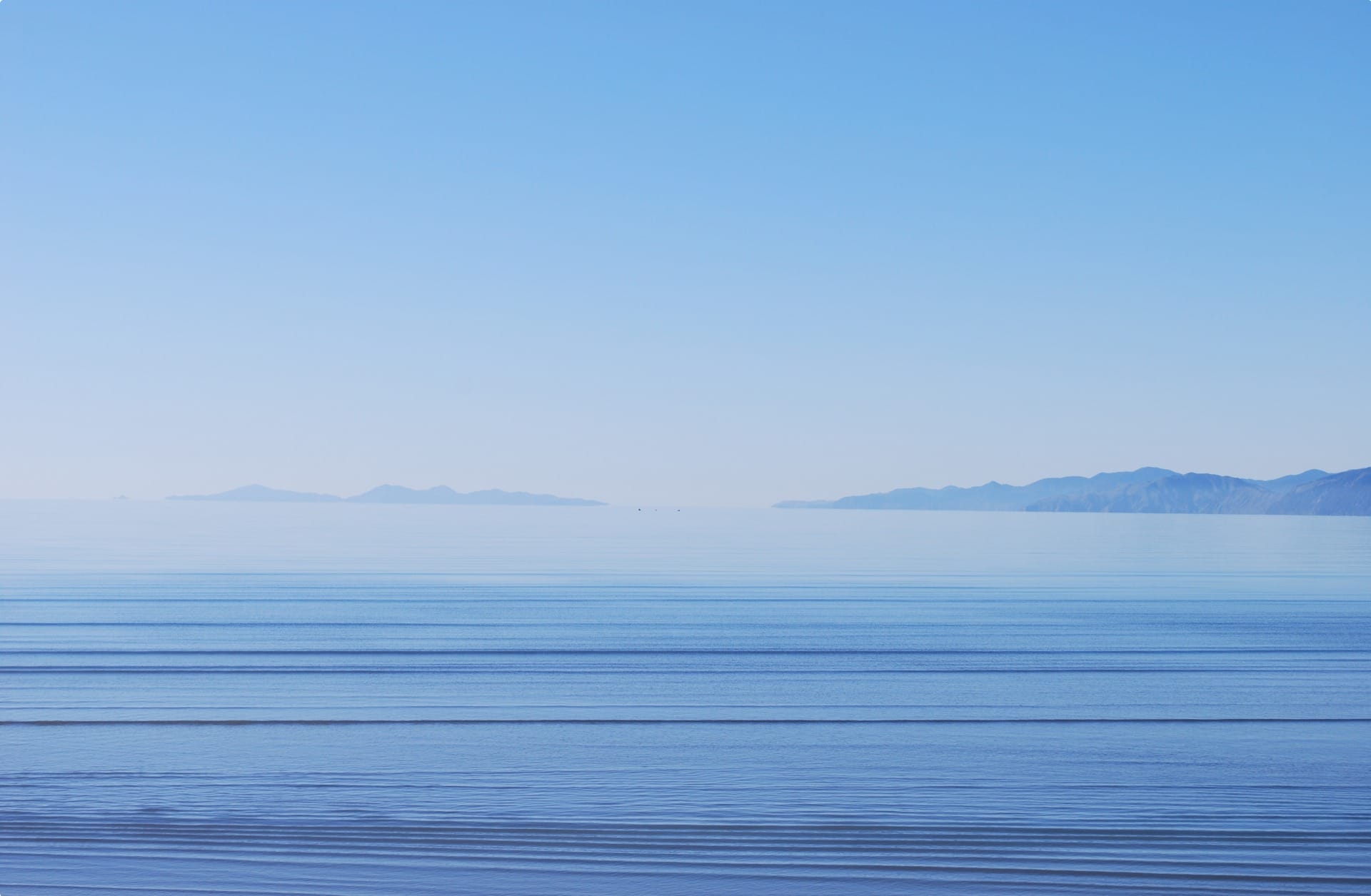
The vessel then continued to Tonga and Fiji Islands, where D’Urville charted 120 islands, many of which were previously unknown. Heading northeast to the Louisiades, d’Urville also charted the reefs surrounding New Caledonia, before surveying the northern shores of New Guinea, were a prominent cape still bears his name.
After replenishing supplies at Ambon Island, d’Urville sailed southward, intending to follow the western coast of Australia, but was soon forced well southwest of the continent by unfavourable winds. He then picked up the Roaring Forties, which sped the Astrolabe towards Tasmania.
In Hobart, d’Urville became privy to the details of the rumour that the English captain Peter Dillon had discovered the relics of La Pérouse’s expedition at Vanikoro. With orders from his naval officer to investigate every possible lead, D’Urville set sail for Solomon Islands, reaching the site in February 1828.
Distinctive porcelain, European guns and lead were swiftly collected from the wreck site, proving it was the correct location. In his own view, this discovery was D’Urville’s major achievement. Here, he had his men construct a memorial, on which they attached a lead plaque inscribed with the words: “To the memory of La Pérouse and his companies. Astrolabe. 14 March 1828.”
However, with many of his men ill, D’Urville reluctantly had to abandon any further search for artefacts. The voyage continued with the mapping of part of the Caroline Islands and the Moluccas, before they set sail to return to France, via Guam, Buru, Ambon, Mauritius and Réunion Island. After a voyage of 41 months, they reached Marseille and then Toulon in March 1829,
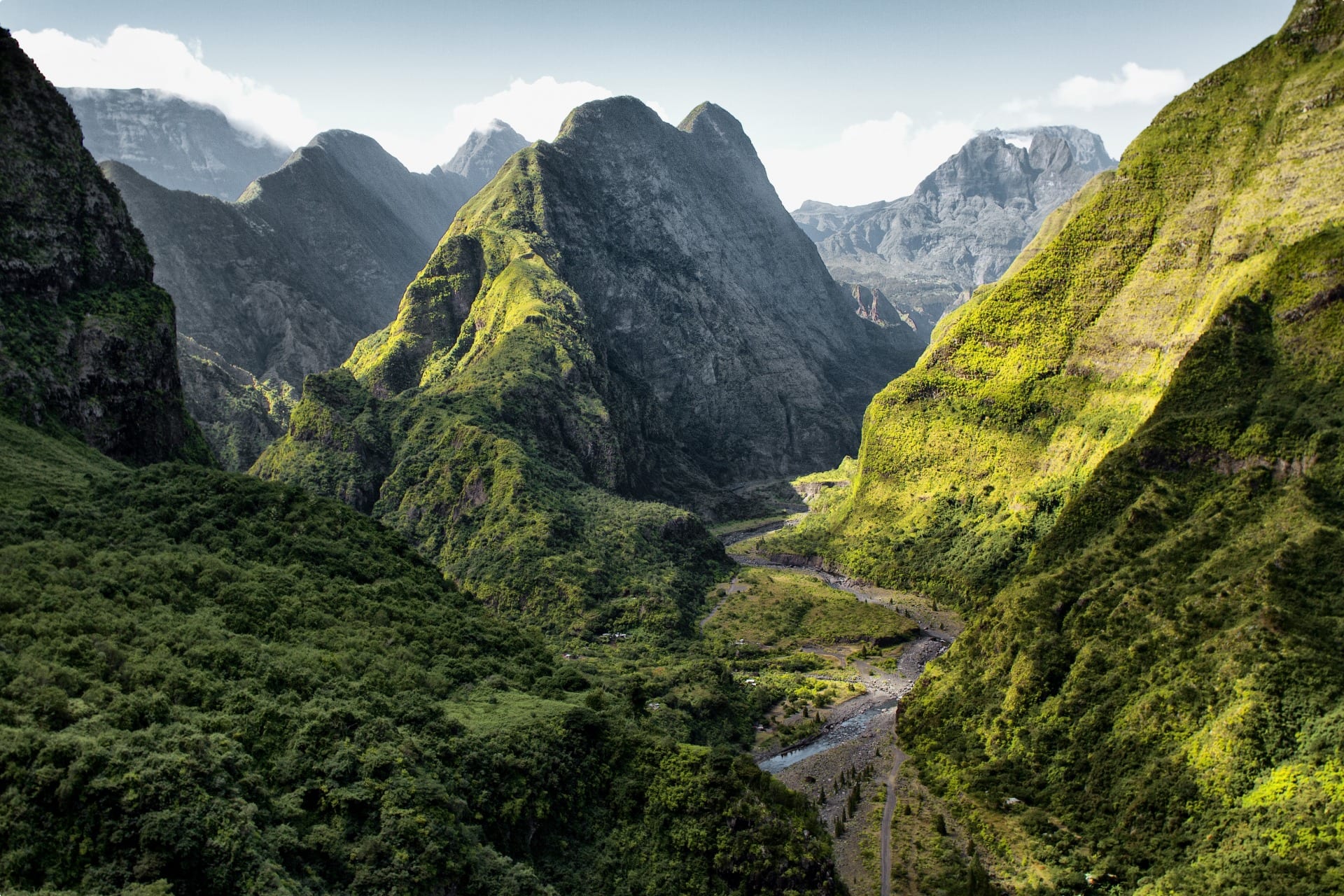
In many regards, the expedition had been a success. Peter Dillon’s claims about the tragic fate of La Pérouse had been confirmed and France’s most famous explorer, his officers and crew had been respectfully mourned at the site of their demise. Several new discoveries had also enabled French cartographers to fill in more details on their charts of the Pacific region; and the expedition led D’Urville to invent the terms Malaysia, Micronesia and Melanesia, distinguishing these Pacific cultures and island groups from Polynesia.
Moreover, the expedition had allowed accompanying scientists to observe and record thousands of specimens and objects of these new worlds. The Astrolabe returned with an impressive load of specimens for the Natural History Museum, including 1,600 botanical specimens, hundreds of species of insects, and thousands of drawings of the unfamiliar animals studied. The collection would strongly influence the scientific analysis of those regions.
However, regarding France’s aspirations to establish an Australian colony, the expedition had come just too late. By the 1820s, with the colony at Port Jackson well established, Britain was strategically placed and sufficiently assertive to act against any potential French claims in this region. Alert to the continued presence of French vessels in western and southern waters, Governor Darling of the Colony of NSW acted decisively to effectively take British possession of the western side of the continent in 1826, completing ignoring St Aloüarn’s prior claim for France.
History may have been different if Duperrey had carried out his orders to examine the Swan River region or King Sound in 1823, or if Bougainville had decided to do so on his 1824-1826 expedition. If the French had acted swiftly there might have just been time for France to form a colony in the southwest corner of the Australian continent. Instead, Western Australia’s fate was sealed to be yet another overseas British territory.
Tour of Western Australia
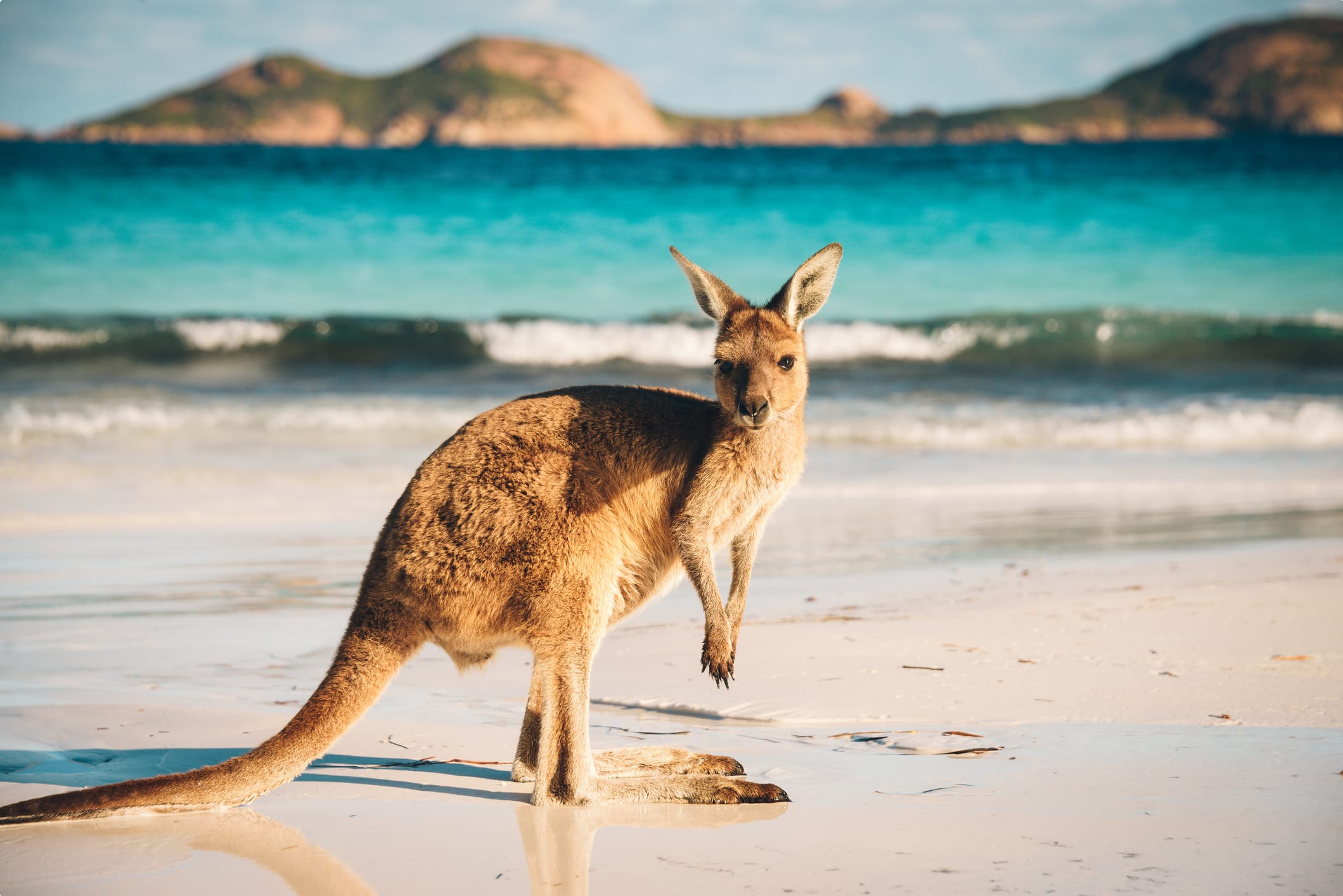
Odyssey offers easy, convenient, and relaxed escorted small group tours across the great state of Western Australia. We explore the state’s unspoiled native wilderness, sites of its ancient Aboriginal history, World Heritage Sites, and breath-taking wildflower blooms, all with some truly spectacular scenery along the way. This and more is all waiting to be explored on one of Odyssey’s small group tours of Western Australia, designed for the senior traveller, and led by experienced, and enthusiastic like minded people.
Tours include:
- Western Australia Tour (21 days)
- Wildflowers Tour of Western Australia (15 days)
- Tour of the Kimberley, Purnululu, Tiwi Islands and Arnhem Land (18 days)
- Tour of Australia’s Kimberley (15 days)
- Central and Western Australia by Air (13 nights)
Odyssey Traveller has been designing international tours for mature and senior travellers since 1983, with an emphasis on educational tours, designed to give you an in-depth experience of your travel destination. Our tours are really small group tours, generally including 6-12 travellers accompanied by an expert tour operator/tour guide. The tour package price generally includes accommodation, transport in a comfortable vehicle, access to attractions, and several meals, to give you the opportunity to get to know the rest of your small group tour passengers.
Articles about Australia published by Odyssey Traveller:
- The Kimberley: A Definitive Guide
- Uncovering the Ancient History of Aboriginal Australia
- Aboriginal Land Use in the Mallee
- Understanding Aboriginal Aquaculture
- Mallee and Mulga: Two Iconic and Typically Inland Australian Plant Communities (By Dr. Sandy Scott).
- The Australian Outback: A Definitive Guide
For all the articles Odyssey Traveller has published for mature aged and senior travellers, click through on this link.
External articles to assist you on your visit to Western Australia:
- The Ultimate Guide to Western Australia’s Wildflowers
- Popular National Parks Western Australia
- Western Australia’s Best Beaches
- Who was the first European to land on Australia?
- 10 Reasons Reasons Why the West Coast of Australia is the Best Coast
Originally published July 22, 2021
Updated January 13, 2022.
Related Tours

13 days
May, Jun, Jul, Aug, SepSmall group tour of Australia's Kimberley
Visiting Western Australia
Escorted small group tour of the Kimberley. We explore and visit The Bungles, Bell Gorge, Mitchell plateau & Halls Creek in the dry season. Amazing landscapes intertwined with Aboriginal communities resident more than 45,000 years.
From A$15,390 AUD
View Tour
22 days
Feb, Mar, Apr, Jun, Aug +1Western Australia tour
Visiting Western Australia
Escorted small group tour for senior and mature travellers as a couple of solo traveller. Upto 12 people of WA's regional History tour. The program including Esperance, Kalgoorlie, Gwalia and Perth. Local guides and program leader share knowledge about this fascinating region.
From A$13,695 AUD
View Tour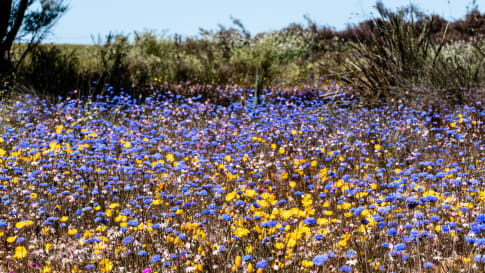
15 days
Aug, SepWildflowers tour of Western Australia
Visiting Western Australia
Escorted small group tour for senior and mature travellers as a couple of solo traveller. Upto 12 people of WA's Wildflower regions including Esperance and the Fitzgerald river National park. Local guides and program leader share knowledge about this fascinating region whilst in bloom.
From A$12,250 AUD
View Tour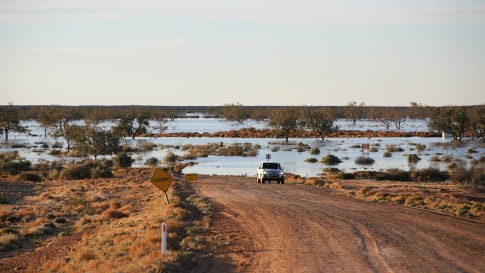
65 days
MarLong tour of Australia for a small group
Visiting New South Wales, Northern Territory
Small group tour for senior couples and solo travellers touring Australia. Travelling through the outback and visiting many of the famous sights as well as off the beaten track locations. Learn about the history of the people who explored the deserts, from indigenous communities to Europeans, as well as Burke and Wills, visit White Cliffs, Marree and far north Kakadu and the Kimberley.
From A$48,995 AUD
View Tour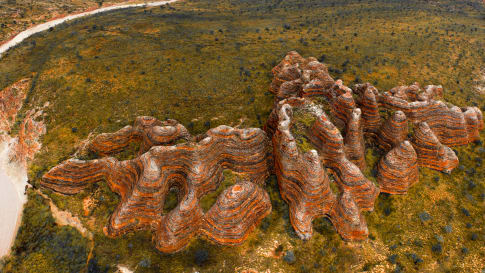
19 days
Sep, Apr, May, Jun, Jul +2Kimberley, Purnululu, Tiwi Islands and Arnhem Land
Visiting Northern Territory, Western Australia
Small group tour touring most of the Australian territory, travelling through the outback and visiting many of the famous sights as well as off the beaten track locations, giving you the opportunity the explore and meet our people in the most remote locations and far north Kakadu and the Kimberley.
From A$14,995 AUD
View Tour
days
Apr, May, Jul, Aug, Sep +2Central and Western Australia by Air
Visiting Northern Territory, Western Australia
Small group escorted air tour of Central and Western Australia, where the coaches have yet to reach. Outback Australia, Aboriginal art, Standing stones, Derby, Broome, Tanami desert, Kununurra explored for mature couples and single travelers.
Related Articles
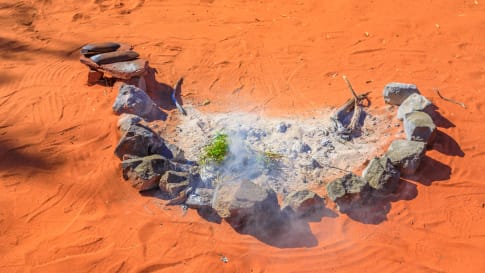
Australian Aboriginal Paths of Migration
Article for small group tours of mature or senior couples or solo travellers interested in learning more about Aboriginal history, Kinship, trading routes, songlines and ancient history.

The Arrival of Aboriginal Australians on the Continent
Tracing Aboriginal history via an outback small group tour for mature and senior couples or solo travellers provides an intriguing learning platform about Australia, rock art, trading and culture that traces a history possibly some 120,000 years ago.
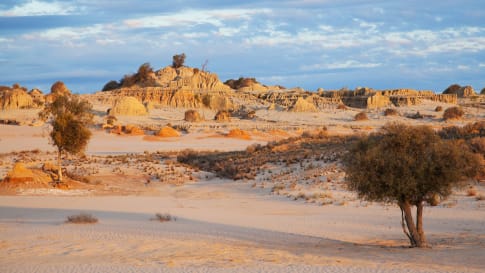
Uncovering the ancient history of Aboriginal Australia
For small group escorted tours of Australia in Queensland, Victoria, New South Wales, South Australia, Tasmania, Western Australia and the Northern Territory a guide on Aboriginal culture for mature and senior travellers.

